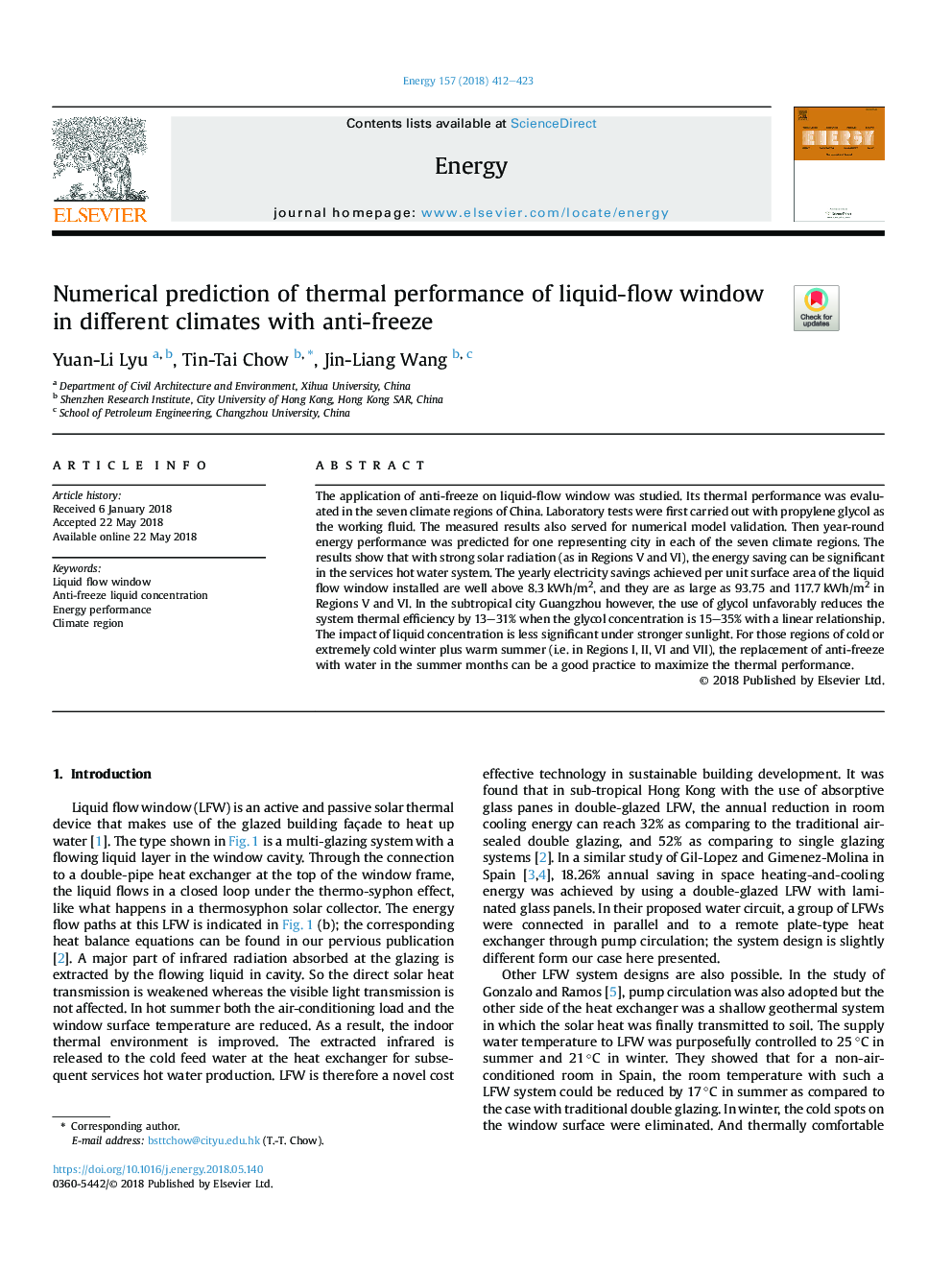| Article ID | Journal | Published Year | Pages | File Type |
|---|---|---|---|---|
| 8071240 | Energy | 2018 | 12 Pages |
Abstract
The application of anti-freeze on liquid-flow window was studied. Its thermal performance was evaluated in the seven climate regions of China. Laboratory tests were first carried out with propylene glycol as the working fluid. The measured results also served for numerical model validation. Then year-round energy performance was predicted for one representing city in each of the seven climate regions. The results show that with strong solar radiation (as in Regions V and VI), the energy saving can be significant in the services hot water system. The yearly electricity savings achieved per unit surface area of the liquid flow window installed are well above 8.3â¯kWh/m2, and they are as large as 93.75 and 117.7â¯kWh/m2 in Regions V and VI. In the subtropical city Guangzhou however, the use of glycol unfavorably reduces the system thermal efficiency by 13-31% when the glycol concentration is 15-35% with a linear relationship. The impact of liquid concentration is less significant under stronger sunlight. For those regions of cold or extremely cold winter plus warm summer (i.e. in Regions I, II, VI and VII), the replacement of anti-freeze with water in the summer months can be a good practice to maximize the thermal performance.
Keywords
Related Topics
Physical Sciences and Engineering
Energy
Energy (General)
Authors
Yuan-Li Lyu, Tin-Tai Chow, Jin-Liang Wang,
